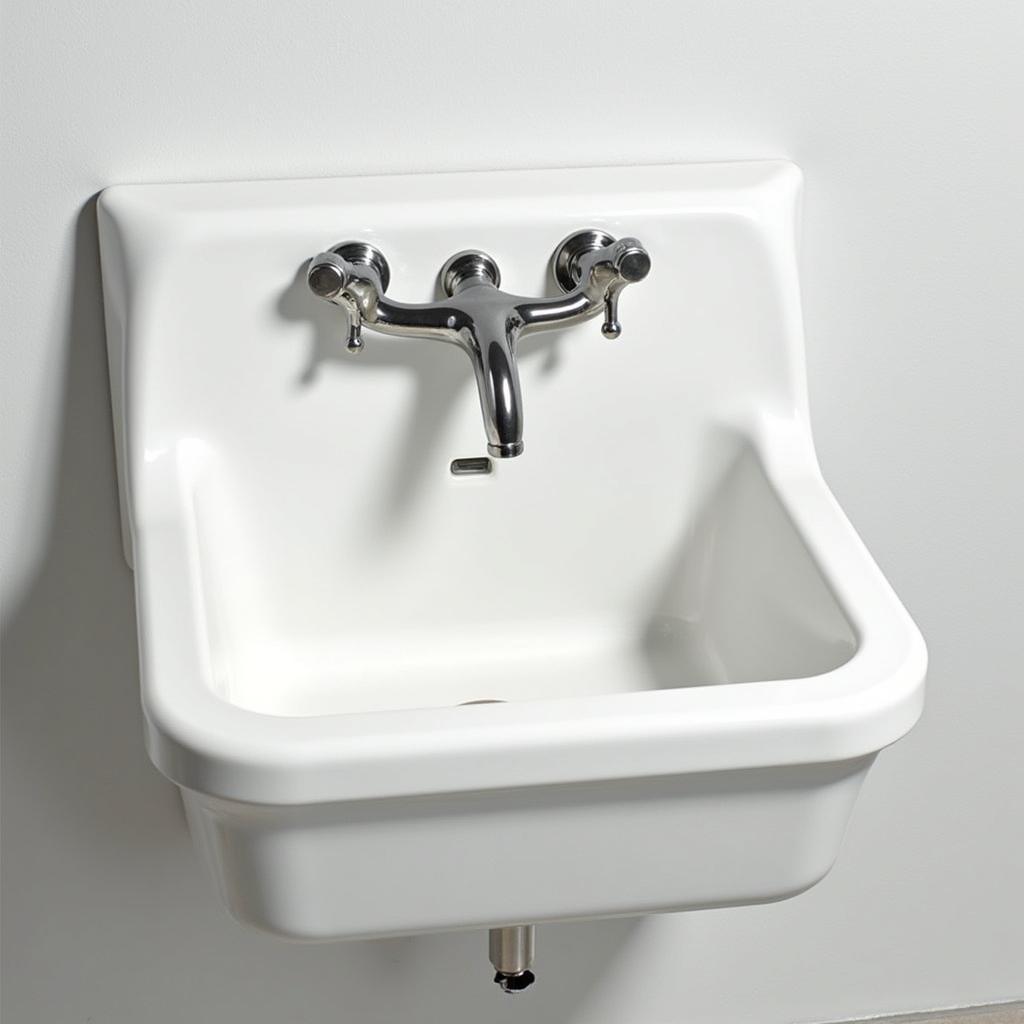Hospital Wash Basins are essential fixtures in any healthcare facility. They play a crucial role in maintaining hygiene standards for both patients and staff. Choosing the right basin involves considering factors like infection control, durability, and accessibility, all while ensuring a comfortable and aesthetically pleasing environment.
Choosing the Right Hospital Wash Basin
Selecting the right hospital wash basin is a critical decision that impacts both hygiene and design. Different materials, designs, and features cater to specific needs within a hospital setting. Understanding these differences is vital for making informed choices.
Materials and Durability
Hospital wash basins are typically constructed from materials that can withstand rigorous cleaning and disinfection. Stainless steel is a popular choice due to its durability, resistance to stains and corrosion, and ease of cleaning. Solid surface materials offer a seamless, non-porous surface that inhibits bacterial growth. These materials also allow for integrated designs and custom shapes. Ceramic basins are another option, known for their classic aesthetic and affordability.
Another crucial factor to consider is the basin’s resistance to harsh chemicals. Hospital cleaning protocols often involve strong disinfectants, and the basin material should be able to withstand these chemicals without degrading over time.
Designs and Functionality
Hospital wash basins come in various designs to meet the diverse needs of different departments. Surgeon scrub sinks are deep and wide, designed for thorough handwashing before surgical procedures. Hand rinse basins are smaller and more compact, ideal for quick hand hygiene between patient interactions. Wall-mounted basins save space and are easy to clean underneath, while countertop basins offer more storage options.
Hands-free operation is becoming increasingly popular in hospitals due to its contribution to infection control. Sensor-activated faucets and soap dispensers eliminate the need to touch contaminated surfaces, minimizing the spread of germs. Knee-operated controls provide another touchless option.
Accessibility and Patient Comfort
Accessibility is a paramount concern when choosing hospital wash basins. ADA-compliant basins are designed to accommodate patients with disabilities, featuring shallow depths, lever-style handles, and ample knee clearance. Basin height should be carefully considered to ensure accessibility for wheelchair users.
 ADA-Compliant Hospital Wash Basin with Accessibility Features
ADA-Compliant Hospital Wash Basin with Accessibility Features
Patient comfort should also be a priority. Basins with rounded edges and smooth surfaces are less likely to cause injury. Thermostatic mixing valves ensure a consistent and safe water temperature, preventing scalding.
Maintaining Hygiene with Hospital Wash Basins
Proper cleaning and maintenance are essential for ensuring that hospital wash basins remain hygienic and functional. Regular cleaning with appropriate disinfectants is crucial for eliminating harmful bacteria and viruses.
Cleaning Protocols and Best Practices
Establish clear cleaning protocols for all staff members to follow. These protocols should specify the type of disinfectant to use, the frequency of cleaning, and the proper cleaning technique. Regular inspections should be conducted to ensure compliance with these protocols.
 Hospital Staff Cleaning a Wash Basin Following Hygiene Protocol
Hospital Staff Cleaning a Wash Basin Following Hygiene Protocol
Preventing Cross-Contamination
Cross-contamination can be a significant concern in hospital settings. Implementing strategies to minimize cross-contamination is vital. Using disposable hand towels or hand dryers eliminates the need for shared cloth towels, reducing the risk of spreading germs. Regularly cleaning and disinfecting the area surrounding the basin is also important.
Conclusion
Hospital wash basins are more than just fixtures; they are critical components of a hygienic and functional healthcare environment. Choosing the right basin requires careful consideration of various factors, including material, design, functionality, accessibility, and patient comfort. By investing in high-quality hospital wash basins and implementing proper cleaning and maintenance protocols, healthcare facilities can ensure a safe and comfortable environment for both patients and staff. Investing in the right hospital wash basin is an investment in patient well-being.
FAQ
- What is the best material for a hospital wash basin?
- What are the different types of hospital wash basins available?
- How do I clean a hospital wash basin effectively?
- What are the accessibility requirements for hospital wash basins?
- How can I prevent cross-contamination around hospital wash basins?
- What are the benefits of using sensor-activated faucets in hospitals?
- How often should hospital wash basins be cleaned?
For further assistance, please contact us at Phone Number: 02437655121, Email: [email protected] Or visit us at: No. 298 Cau Dien Street, Minh Khai, Bac Tu Liem, Hanoi, Vietnam. We have a 24/7 customer service team.